
Contoh Passive Voice Simple Past Tense Berbagai Contoh Gambaran
The subject is something, or it does the action of the verb in the sentence. With the passive voice, the subject is acted upon by some other performer of the verb. (In case you weren't paying attention, the previous two sentences use the type of voice they describe.) But the passive voice is not incorrect. In fact, there are times when it can.

5 Examples Of Active And Passive Voice In Simple Present Tense Design
1. For positive Simple Present Passive voice sentences: We use the formula of subject + auxiliary verb "to be" (am/is/are) + past participle of the main verb + "by" + agent (optional). Active Voice: "They deliver the packages." Passive Voice: "The packages are delivered by them." 2. For negative Simple Present Passive voice sentences:
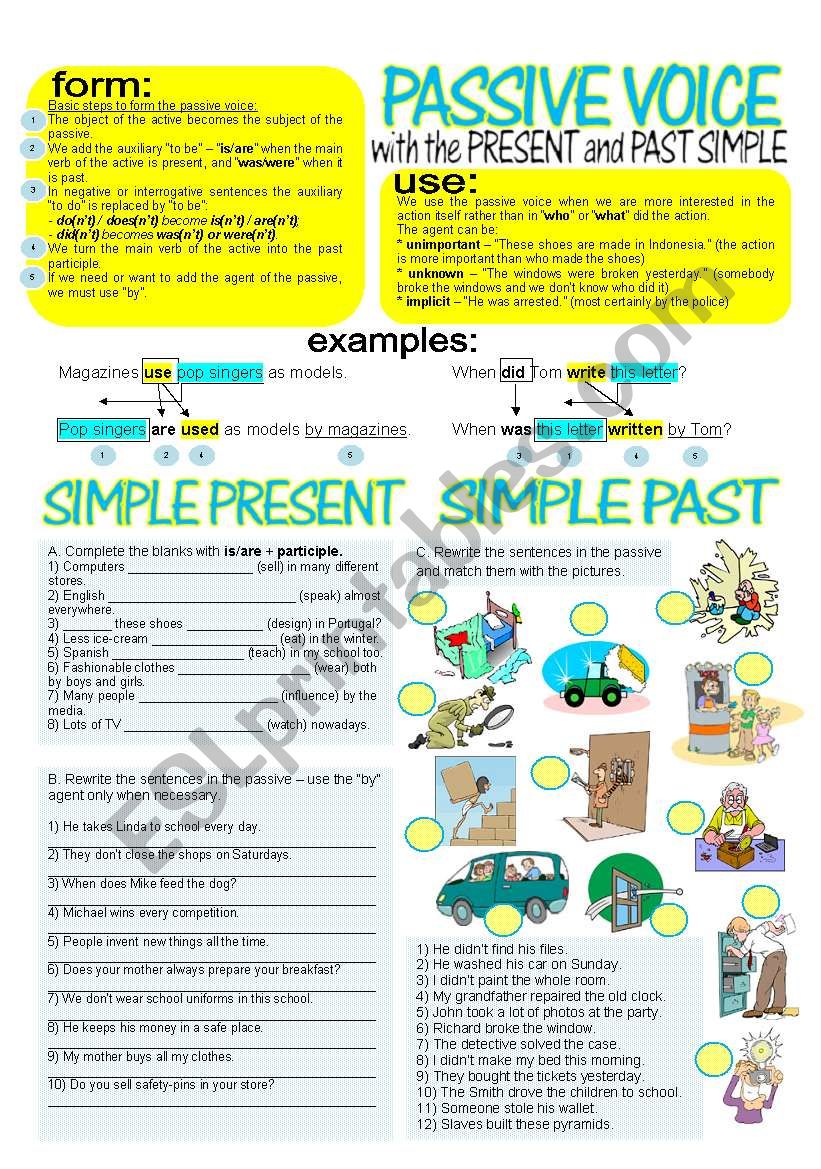
PASSIVE VOICE with PRESENT&PAST SIMPLE + key ESL worksheet by cagreis
We make the passive using the verb be + past participle. We start the sentence with the object. It is not always necessary to add who or what did the action. Only the form of be changes to make the tense. The past participle stays the same. Here are examples of the passive in its most common tenses. Do this exercise to test your grammar again.

Passive Voice Present Simple And Past Simple Sentence Scramble My XXX
Level: beginner Transitive verbs have both active and passive forms: Passive forms are made up of the verb be with a past participle: If we want to show the person or thing doing the action, we use by: She was attacked by a dangerous dog. The money was stolen by her husband. Active and passive voice 1 Active and passive voice 2
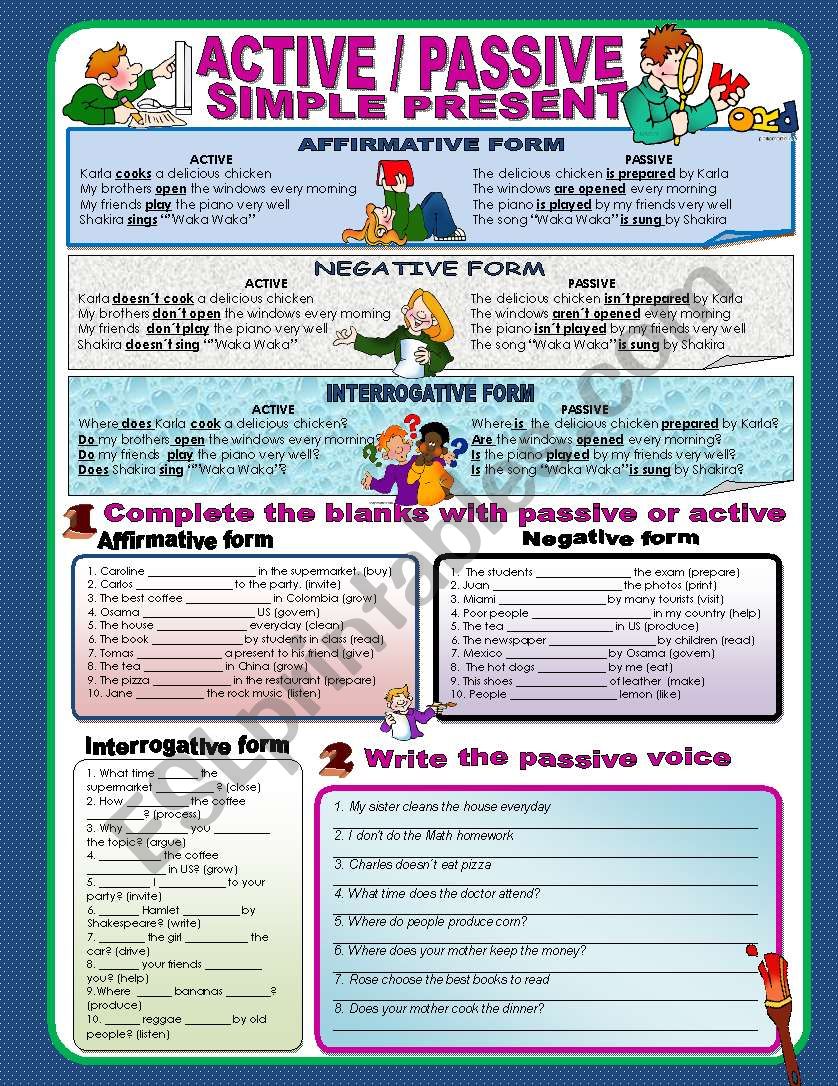
Active / Passive in simple present ESL worksheet by paticorner
The passive is usually formed by the verb to be + past participle. Can you give me some examples of the active and passive? Yes, of course. Here's a passive sentence: My room is being cleaned. 'My room' is the main focus of the sentence. The active form would be 'The cleaners are cleaning my room'. This sounds strange because it is obvious.

Passive Voice Simple Present Tense Studyhelp
The passive voice in the present simple is used here (we are set). The past participle is 'set' (set - set - set), and it's being used to emphasise the subject 'we'. It sounds incredible, doesn't it? 'Doesn't it' is a question tag. The verb 'do' is used to form the question tag because 'sounds' is a normal verb.

passive voice present simple ingilizce dilbilgisi dilbilgisi eğitim
In the present simple, the passive is: am / is / are + past participle (3rd form of the verb). Remember! The past participle always stays the same. Only the form of be changes. The subject and verb must always agree in number. Negative and Questions Notice that the helping verb in passive sentences is always a form of the verb be . Remember!

Pin on English Work sheets
The simple present is defined as a verb form that expresses a discrete action or event in the present or near future. The simple present passive is periphrastic, which means consisting of a "phrase of two or more words that perform a single grammatical function that would otherwise be expressed by the inflection of a single word.". The.
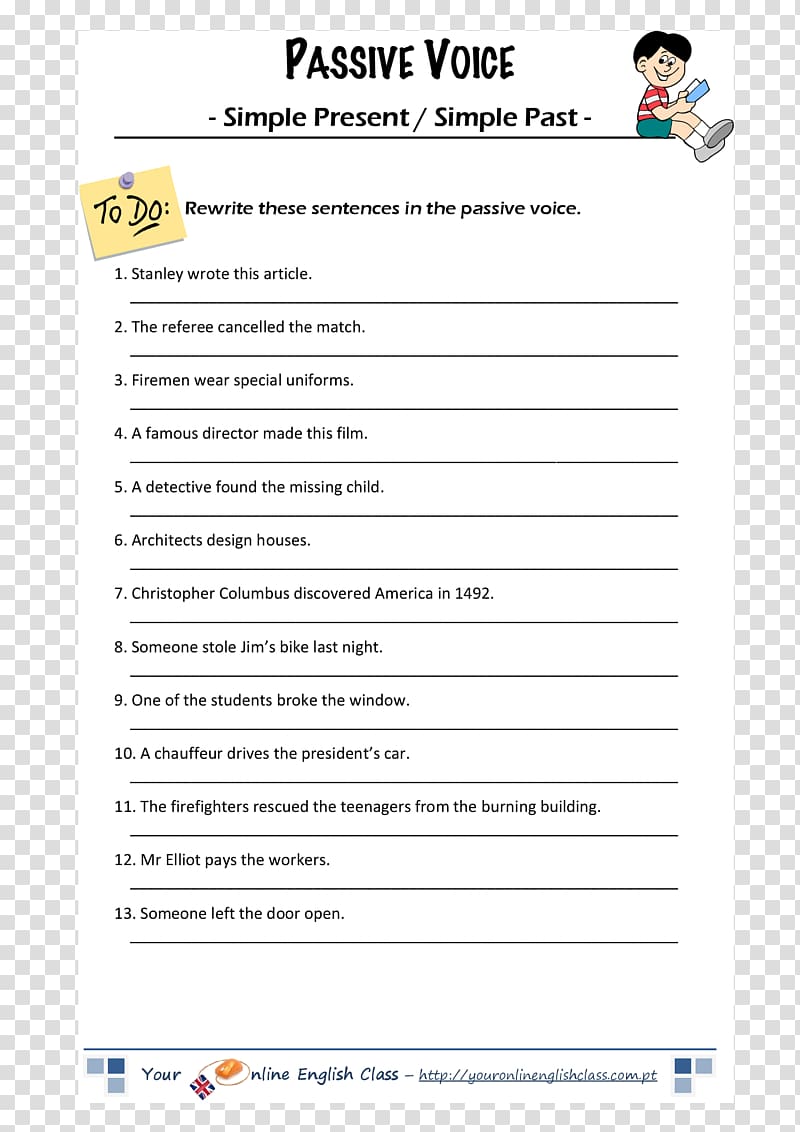
Passive Voice Present Continuous Tense Exercises Exercise Poster
Passive Verbs Exercise 1 Passive Exercise 1 Perfect English Grammar Review passive verbs here Download this quiz in PDF here Passive 1 (present simple) Make these active present simple sentences passive. You don't need to repeat 'somebody'. More passive exercises here Do you want to master English grammar? Click here to read about the membership.

Passive Voice Simple Present Tense Studyhelp
Something is done by someone regularly / everyday / as expected. Active : The gardener waters the flowers every evening. Passive: The flowers are watered by the gardener every evening. Active : Helen doesn't drink anything in parties. Passive: Nothing is drunk by Helen in parties. Active : Who sells umbrellas? Passive: Who are umbrellas sold by?
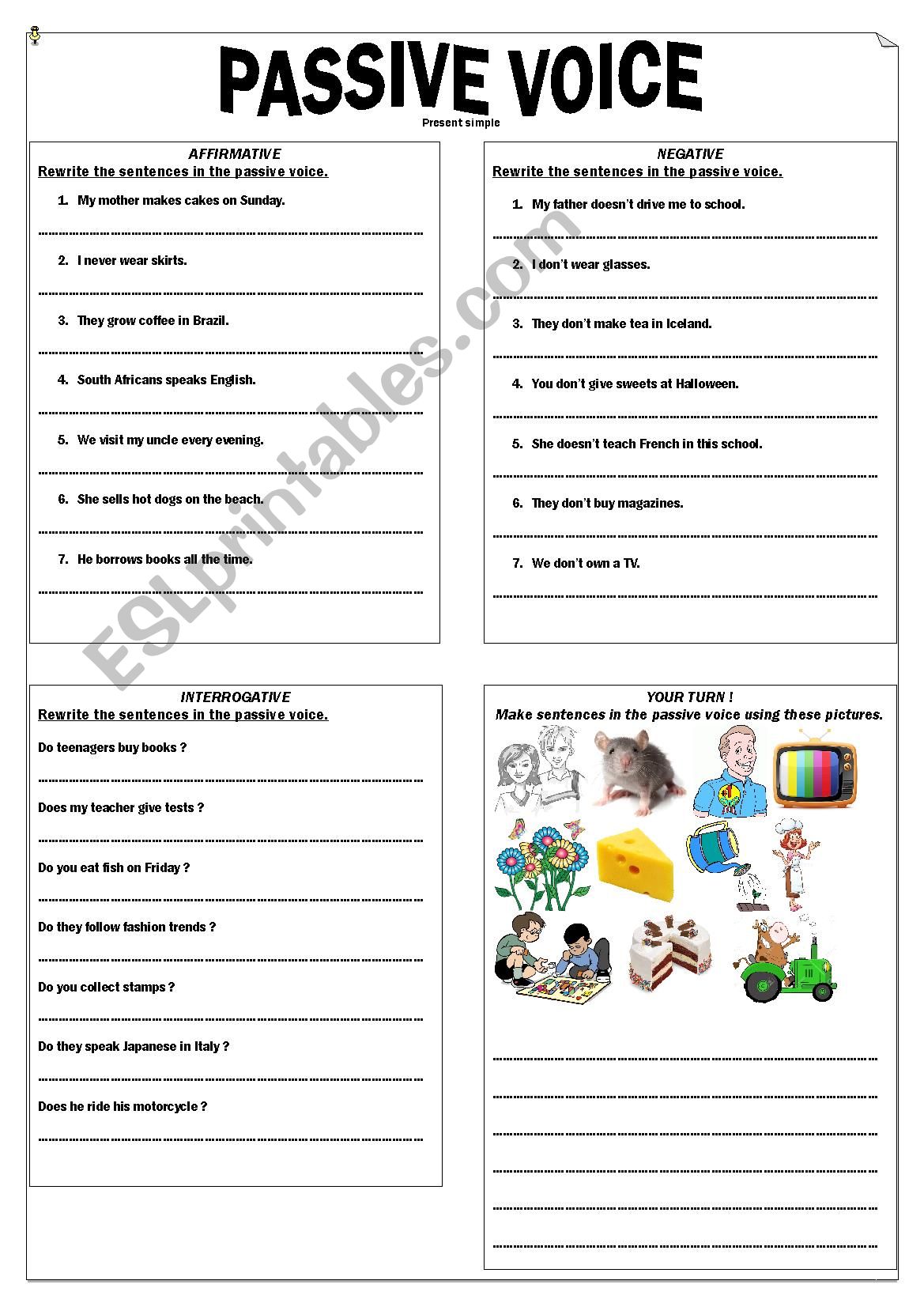
Passive voice present simple exercise ESL worksheet by missteach106
Geography is taught by Mr Lloyd and Mrs James. (present simple passive) We don't often use perfect continuous forms ( have/has been being + - ed form) in a passive structure. We usually find a way to reword sentences like this. Compare Verbs and the passive
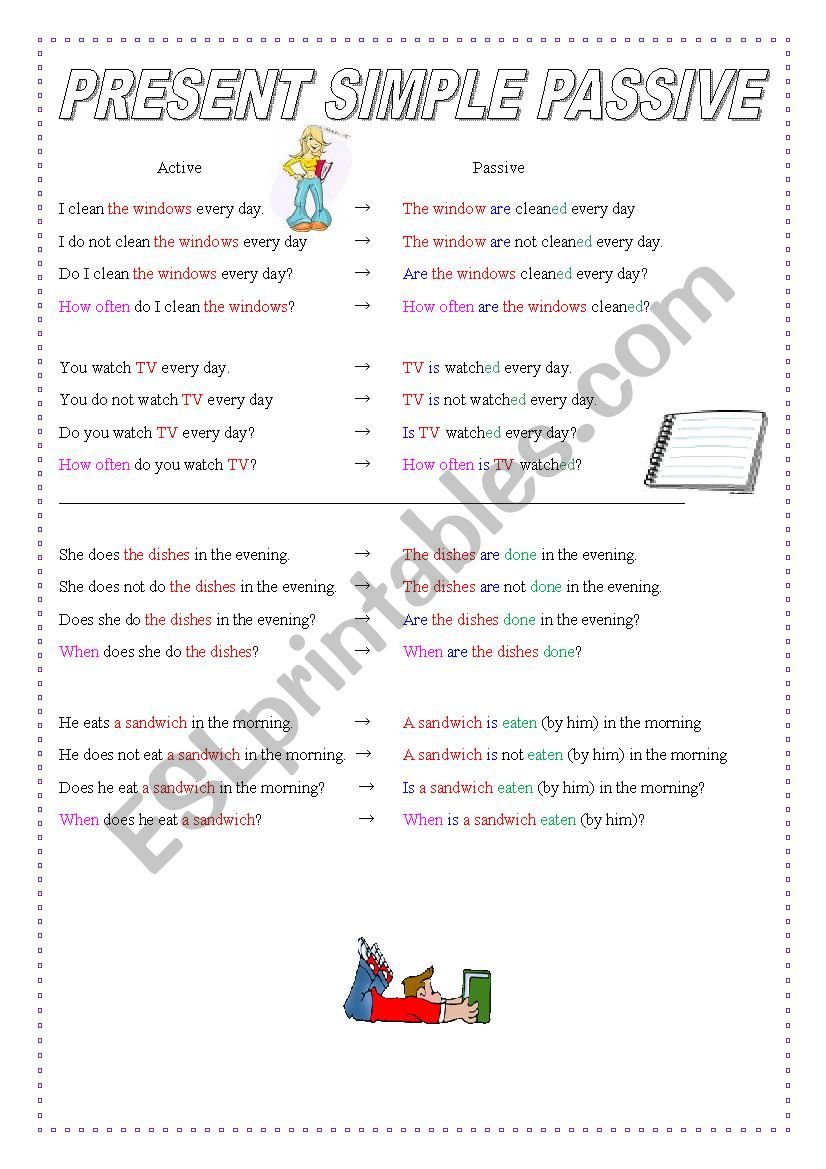
Present Simple Passive ESL worksheet by rzepka82
Try the interactive version of the above quiz! Grammar Worksheet Passive: Present. 15 sentences (fill in the gaps to complete each sentence); with ANSWER KEY and percentage conversion chart. Level: Upper Intermediate. Time: Approx 15 minutes. Download the PDF file by clicking on the gold. button below!
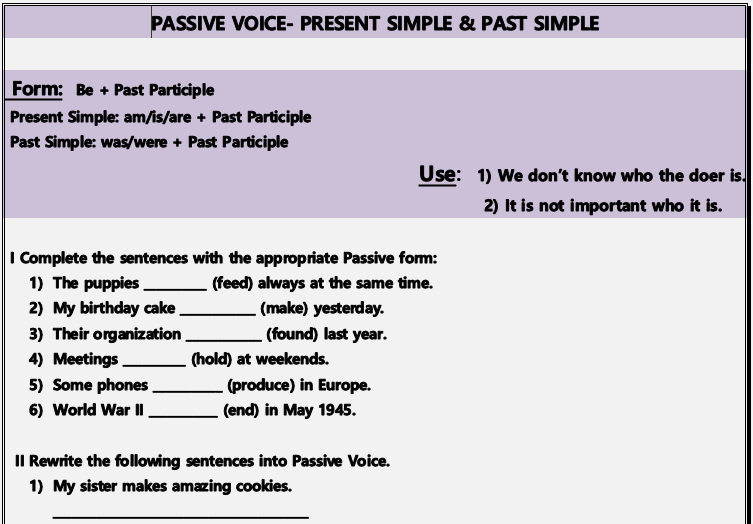
Passive Voice Present Simple & Past Simple Exercises
Present Simple Passive is used to talk about some actions that are performed in the present or repeatedly (habits), simple statements of fact or universal truth. The agents of such actions may be denoted with ' by ': This work is performed by a new company. The beach is cleaned every morning. Oranges are imported from Paraguay.
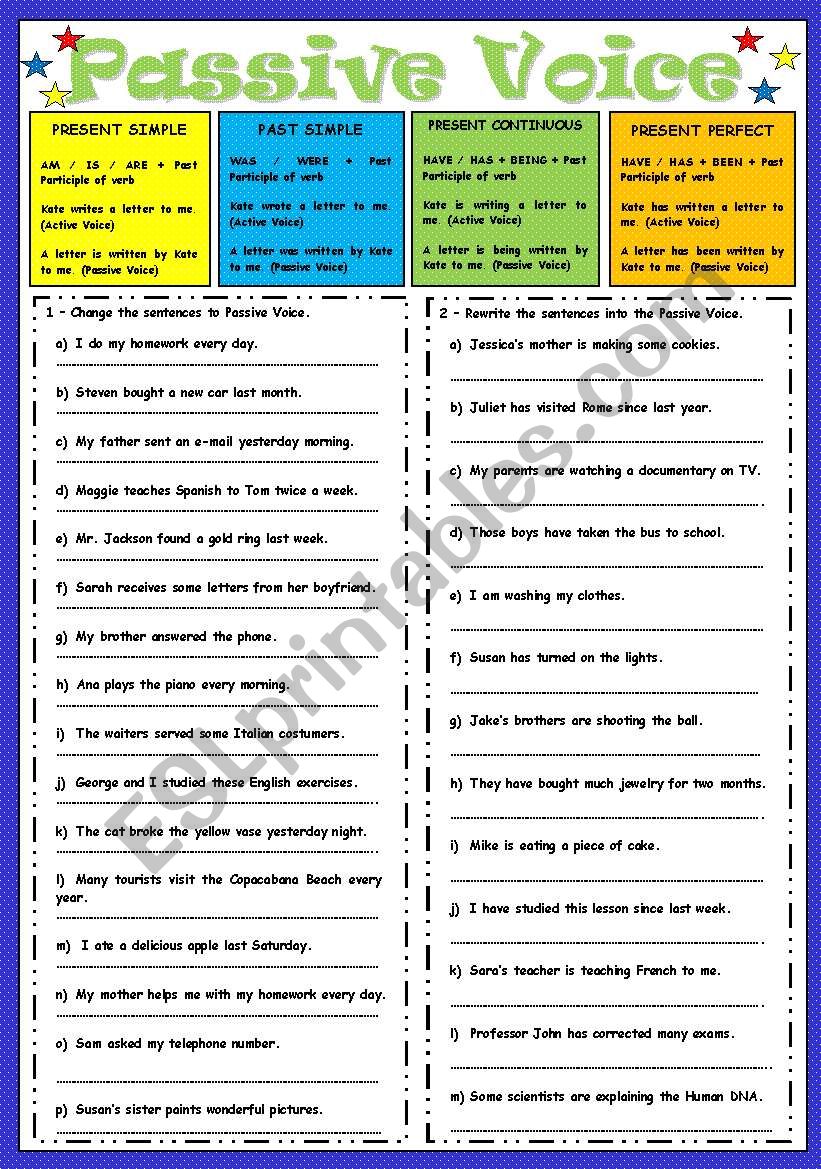
Concentración Punto de referencia satisfacción passive present simple
In this video, we're going to introduce the Present Simple Passive Tense in English Grammar. In this w teach about the forms of passive, how to change forms.

Passive Voice Present Simple & Pas… English ESL worksheets pdf & doc
How to make the Passive in English We make the passive by putting the verb 'to be' into whatever tense we need and then adding the past participle. For regular verbs, we make the past participle by adding 'ed' to the infinitive. So play becomes played. Click here to learn about irregular verbs . Practise with these exercises Verbs with two objects

The passive voice present simple English ESL worksheets pdf & doc
What is Present Simple (Passive Form)? Form - 'be' verb + verb (past participle) e.g. am taken, is eaten, are given, etc. 2. When to use the Passive Present Simple form? What is the Passive Present Simple? - We use the Passive Form when: i) our focus is result of the action - (we use 'by'+ 'person' who did the action)